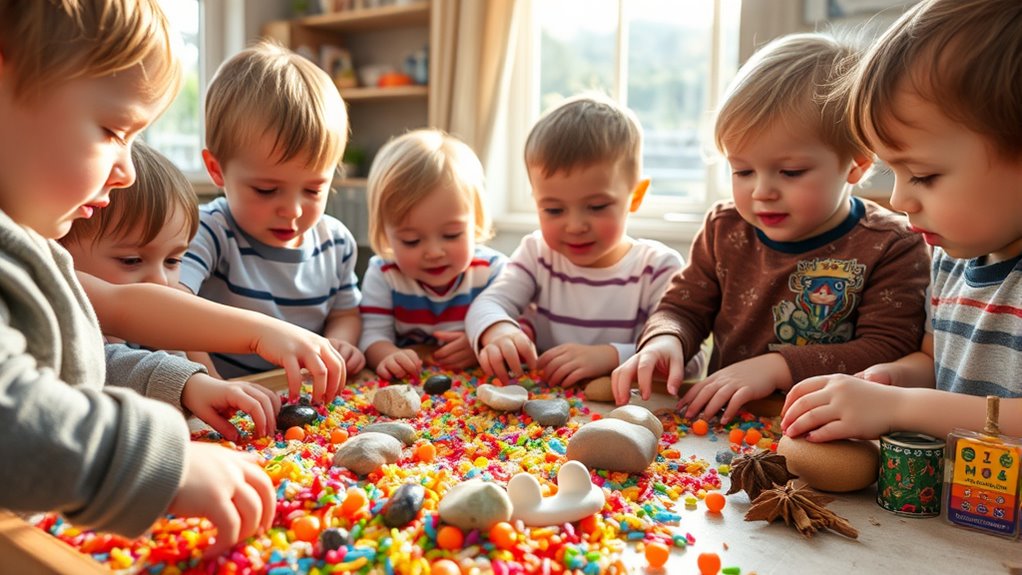Sensory play activities that engage all five senses help your child explore and understand their environment. You can encourage them to explore textured materials like fabric swatches or sandpaper, which develop tactile awareness. Incorporate scent sorting using fragrant spices or playdough to sharpen smell discrimination. Combining these with visual and auditory elements creates rich, multi-sensory experiences that support development and emotional regulation. Keep exploring to discover more ways to make sensory play both fun and beneficial.
Key Takeaways
- Sensory play involves activities that stimulate sight, sound, touch, taste, and smell to enhance sensory development.
- Incorporate textured materials, scented objects, and interactive sounds to engage all five senses simultaneously.
- Use sensory bins with diverse textures and scents to promote exploration and sensory discrimination.
- Include taste-safe activities like flavored snacks or scented playdough for a multisensory experience.
- Combining visual, auditory, tactile, olfactory, and gustatory elements creates rich, engaging sensory play opportunities.

Sensory play activities are essential tools for helping children explore their environment and develop key skills. They encourage curiosity and foster a deeper understanding of the world around them. When you introduce activities that focus on texture exploration, you give your child the opportunity to feel different surfaces—smooth, rough, bumpy, or soft—enhancing their tactile awareness. For example, providing a variety of materials like fabric swatches, textured balls, or sandpaper allows your child to run their fingers over different textures, helping them recognize and differentiate between sensations. This kind of sensory input is crucial for developing fine motor skills and spatial awareness. As they manipulate these objects, they learn to coordinate their movements and understand how different textures feel, which builds a foundation for more complex tasks later on.
Scent sorting is another engaging sensory activity that taps into your child’s olfactory senses. You can incorporate it into daily routines by using scented playdough, spices, or fragrant flowers, encouraging your child to identify and categorize different smells. Start by presenting two or three scents and guide them to compare and sort based on similarities or differences, like identifying which smells are sweet, spicy, or fruity. This process sharpens their smell discrimination skills and enhances their ability to observe fine sensory details. Scent sorting also helps improve memory and language skills, as your child learns to associate specific odors with words or objects. Plus, it adds an element of fun and discovery, making learning more interactive. Developing an awareness of sensory processing can further support their overall sensory integration and emotional regulation.
When planning sensory activities, think about how you can combine texture exploration and scent sorting to create multi-sensory experiences. For instance, you might set up a sensory bin filled with textured objects that also have distinctive scents. As your child touches and smells each item, they develop a richer sensory map of their environment. Encourage them to describe what they feel and smell, which boosts their vocabulary and descriptive skills. Remember, sensory play isn’t about perfection but about exploration and fun. Always supervise your child during these activities, especially when using small objects or strong scents, to ensure safety.
Conclusion
Think of sensory play as planting seeds in a vibrant garden. Each activity nurtures a different sense, helping your child grow into a curious, confident explorer. Just like a garden flourishes with diverse plants, a child’s development blossoms through varied sensory experiences. Embrace these activities with enthusiasm, knowing you’re cultivating a rich, colorful world inside them—one full of wonder and discovery. In this garden of senses, your child’s potential blooms endlessly.










